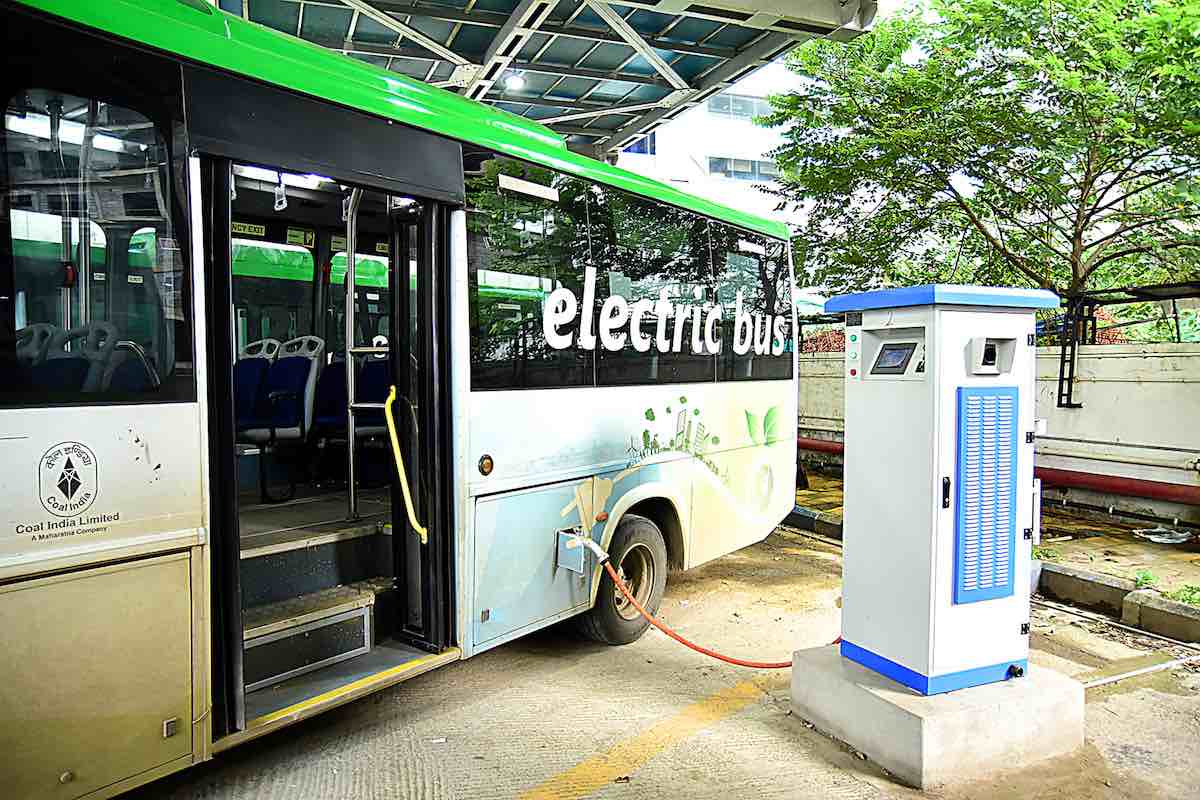Electric Buses In Europe: Hydrogen Vs. Battery Technology

Table of Contents
Battery Electric Buses (BEBs): A Current Market Leader
Battery electric buses currently dominate the electric bus market in Europe. Their widespread adoption is driven by several factors related to their cost-effectiveness and relative technological maturity.
Advantages of BEBs:
- Mature Technology: BEB technology is well-established, with readily available components and a large, established supply chain. This translates to lower manufacturing costs and easier maintenance.
- Lower Upfront Cost: While battery costs remain a significant portion of the overall price, the initial investment for a BEB is generally lower than that of a hydrogen bus. This makes them more accessible for many municipalities and transport operators, especially those with smaller budgets.
- Developing Charging Infrastructure: Significant investment is being made in electric bus charging infrastructure across Europe. Many cities are installing fast-charging stations and depot charging solutions, making BEB operation increasingly feasible. This includes opportunities for overnight charging and opportunity charging during off-peak hours.
- Simple Maintenance and Operation: Compared to FCEBs, BEBs generally have simpler maintenance procedures and require less specialized training for operators and maintenance personnel.
Disadvantages of BEBs:
- Limited Range and Range Anxiety: BEBs have a significantly shorter range than FCEBs, leading to concerns about range anxiety and the need for frequent charging stops throughout the day, especially on longer routes.
- Battery Lifespan and Replacement Costs: Battery degradation is a major factor influencing the long-term cost of ownership. Battery replacement is expensive and can significantly impact the overall budget.
- Environmental Impact of Battery Production and Disposal: The environmental impact of lithium-ion battery production, including mining and manufacturing processes, and their eventual disposal needs careful consideration and sustainable solutions.
- Uneven Charging Infrastructure Deployment: While charging infrastructure is improving, its deployment remains uneven across Europe, with some regions lagging behind others, limiting the practicality of BEBs in certain areas.
Hydrogen Fuel Cell Electric Buses (FCEBs): A Promising Future Technology
Hydrogen fuel cell electric buses offer a compelling alternative to battery electric buses, especially for longer routes and larger fleets. Their potential for longer range and faster refueling makes them a strong contender for the future of sustainable public transport.
Advantages of FCEBs:
- Extended Range: FCEBs boast a significantly longer range than BEBs, reducing the need for frequent refueling stops and making them suitable for longer routes and less frequent service.
- Faster Refueling Times: Refueling an FCEB is much faster than charging a BEB, minimizing downtime and improving operational efficiency.
- Potential for Green Hydrogen: Using green hydrogen, produced from renewable energy sources, makes FCEBs truly zero-emission vehicles, addressing environmental concerns throughout their lifecycle.
Disadvantages of FCEBs:
- High Initial Investment Costs: The upfront cost of purchasing an FCEB is considerably higher than that of a BEB, due to the complexities of fuel cell technology and the need for specialized components.
- Lack of Widespread Hydrogen Refueling Infrastructure: The limited availability of hydrogen refueling stations across Europe is a major barrier to the wider adoption of FCEBs. Investment in infrastructure development is crucial for their successful deployment.
- Hydrogen Production and Storage Challenges: The production and storage of hydrogen present logistical and environmental challenges. The method of hydrogen production significantly impacts its overall environmental footprint. "Green" hydrogen production is crucial to minimize environmental impact.
- Less Mature Technology: FCEB technology is still relatively less mature than BEB technology, potentially leading to higher maintenance costs and a shorter lifespan in some cases.
Comparing the Technologies: A Holistic Approach
Choosing between BEBs and FCEBs requires a holistic approach considering multiple factors beyond initial purchase price.
Total Cost of Ownership (TCO):
A comprehensive TCO analysis is crucial, considering operational costs, maintenance, fuel/electricity costs, battery/fuel cell replacement, and residual value. This long-term perspective is essential for informed decision-making.
Environmental Impact:
Life cycle assessments (LCAs) are necessary to evaluate the overall environmental footprint of each technology, from raw material extraction and manufacturing to operation and end-of-life disposal. This includes considering the carbon footprint of hydrogen production.
Infrastructure Requirements:
Evaluating the existing and planned charging and refueling infrastructure is critical. The availability and accessibility of charging stations for BEBs and refueling stations for FCEBs will greatly impact their practical implementation.
Government Policies and Incentives:
Government support and incentives, including subsidies, tax breaks, and regulations, play a significant role in shaping the market adoption of both BEBs and FCEBs.
Conclusion
The choice between battery electric and hydrogen fuel cell electric buses in Europe depends heavily on specific operational requirements, available infrastructure, and long-term cost considerations. While BEBs currently hold a dominant market position due to lower initial costs and more readily available infrastructure, FCEBs offer significant advantages in range and refueling time, particularly for longer routes. A thorough assessment of total cost of ownership, environmental impact, and infrastructure needs is essential for making informed decisions about electric bus deployment. Careful consideration of both hydrogen buses and battery electric buses, coupled with proactive infrastructure development and supportive government policies, will be crucial for Europe's successful transition to a sustainable public transportation system. Invest wisely in the future of European public transport – choose the right electric bus technology for your needs.

Featured Posts
-
 Analyzing Randles Season A Positive Outlook For The Timberwolves
May 07, 2025
Analyzing Randles Season A Positive Outlook For The Timberwolves
May 07, 2025 -
 Stephen Curry Injury Update Steve Kerrs Hopeful Return Timeline
May 07, 2025
Stephen Curry Injury Update Steve Kerrs Hopeful Return Timeline
May 07, 2025 -
 Harvard Presidents Counterattack Against Trumps Accusations
May 07, 2025
Harvard Presidents Counterattack Against Trumps Accusations
May 07, 2025 -
 Analyzing The Ripple Effect Trumps Endorsement And Institutional Xrp Investment
May 07, 2025
Analyzing The Ripple Effect Trumps Endorsement And Institutional Xrp Investment
May 07, 2025 -
 From Criticism To Praise The Julius Randle Effect On Timberwolves Fans
May 07, 2025
From Criticism To Praise The Julius Randle Effect On Timberwolves Fans
May 07, 2025
Latest Posts
-
 76
May 08, 2025
76
May 08, 2025 -
 The Night Inter Milan Defeated Barcelona In The Champions League Final
May 08, 2025
The Night Inter Milan Defeated Barcelona In The Champions League Final
May 08, 2025 -
 2 0 76
May 08, 2025
2 0 76
May 08, 2025 -
 Champions League Final Inter Milans Triumph Against Barcelona
May 08, 2025
Champions League Final Inter Milans Triumph Against Barcelona
May 08, 2025 -
 76 2 0
May 08, 2025
76 2 0
May 08, 2025
